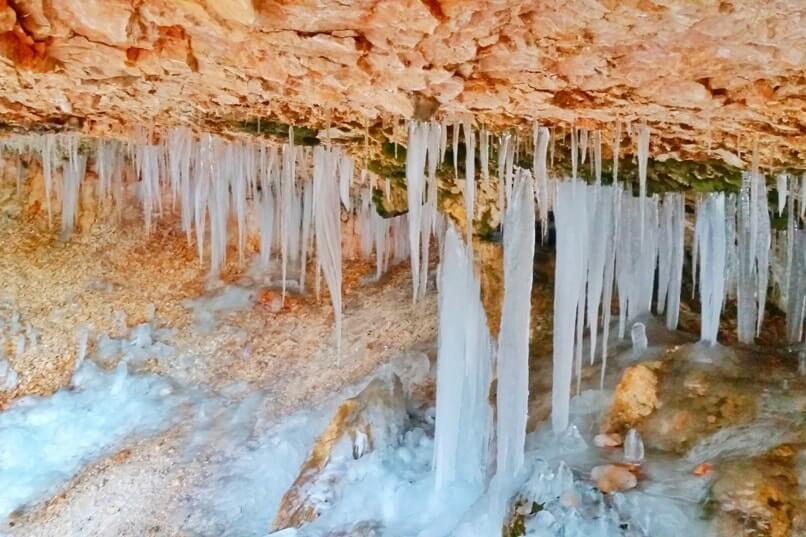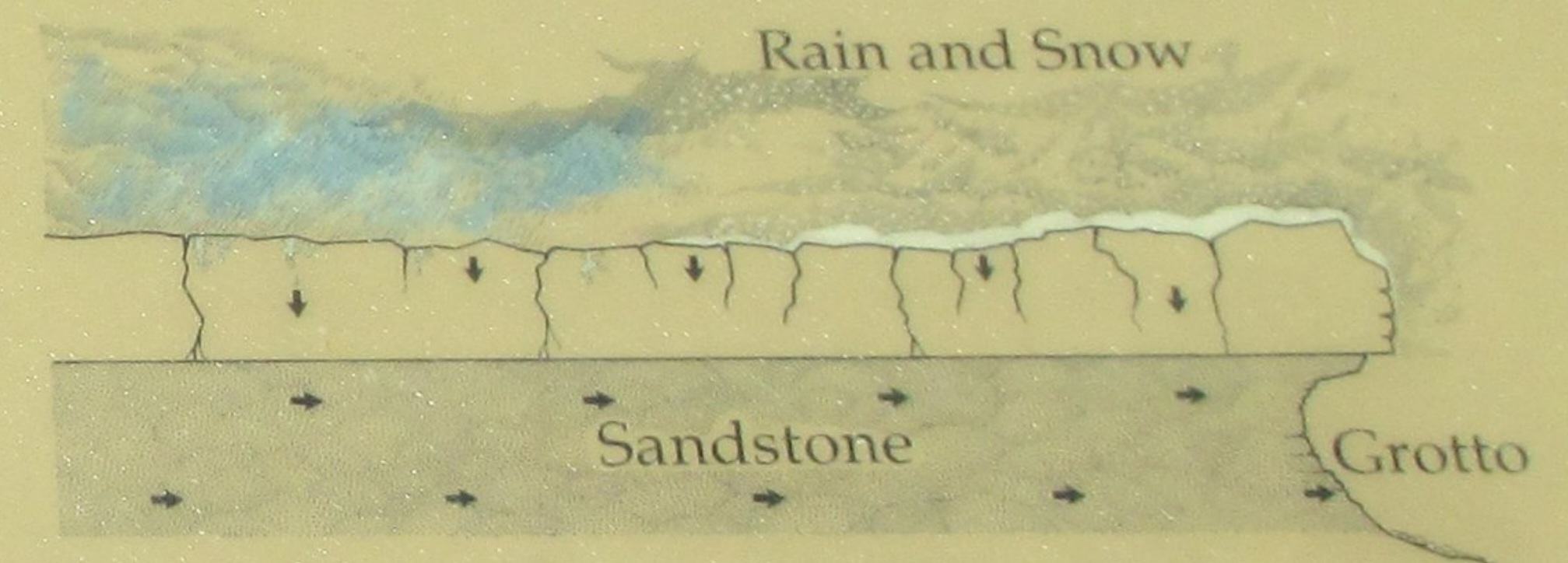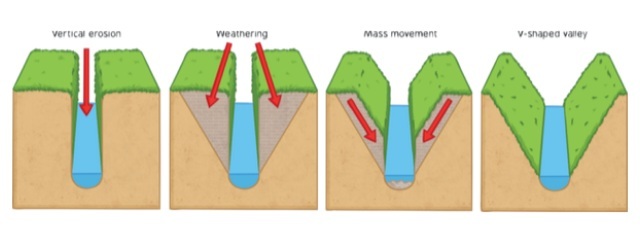Mossy Cave Trailhead is located outside of the main section of Bryce Canyon National Park and is free to access, though the trail is part of the park and maintained by the park service. The trail out and back runs less than a mile roundtrip with only a mild incline inbound, and offers access to both a cave and a waterfall.

Mossy Cave is not necessarily a cave, but a grotto. Its cool, moist environment provides a perfect place for mosses to grow. Icicles form within the grotto during colder months, and can sometimes last until summer.

Mossy Cave is a solution cave. It formed when underground spring water permeated the bedrock. The water slowly dissolved the calcite that bonds the silts and muds of the sedimentary rock, eventually forming an overhang. Rainwater absorbs carbon dioxide as it passes through the atmosphere and even more as it drains through soil and decaying vegetation. The water, combining chemically with the carbon dioxide, forms a weak carbonic acid solution. Most solution caves are found in carbonate rocks like limestone, dolomite, marble, or gypsum, but they may also occur in sandstones, since carbonates often form the glue that holds sandstone together. As this acid seeps into the cracks and pores of the rock, it slowly dissolves the calcite and forms solution cavities.

Tropic Ditch Falls was created in 1892 when pioneer farmers diverted water from the East Fork of the Sevier River through Water Canyon to irrigate fields around Tropic City. The resulting ten mile canal, known as Tropic Ditch, was dug with primitive tools over a two year period. To reduce the amount of necessary digging, pioneers planned the route using natural water courses whenever possible. Most of the rock formations of Bryce Canyon are not technically canyons, as they are primarily formed through frost wedging rather than flowing water. With the help of Tropic Ditch Falls and its consistent water flow, Water Canyon is becoming an exception to this with an evolving structure more in line with that of a typical canyon.

Frost wedging is a form of physical weathering that involves the repeated freezing and thawing of water. As water seeps into the cracks of a rock, it expands about 9% in volume on freezing, and enlarges the cracks slowly over time. These repeating freezing and thawing cycles slowly break apart and reshape the rock. The majority of the rock formations of Bryce Canyon are formed this way.

Fluvial erosion is the natural interaction of flowing water within river and stream channels and beds. The movement of water and abrasive entrained particles results in erosion of the soil and rock it flows through. As water flows downhill, it gains velocity and energy and erodes the surrounding rock and sediment, gradually deepening and widening the channel. The erosive forces of the flowing water carve away the softer rocks, leaving behind steep, sloping sides that converge at the bottom of the valley. These valleys often exhibit a narrow, V-shaped profile, with the stream or river at the lowest point. Over the last century, the waterflow of Tropic Ditch Falls has already begun to reshape Water Canyon though fluvial erosion.
To log this Earthcache:
Please include a picture of yourself or a personal item at either Mossy Cave or Tropic Ditch Falls, and send me the answers to the following questions:
1. Compare the width and height of Mossy Cave. Do you think the grotto is more likely to grow wider or deeper over time?
2. Compare the angle and composition of the upper canyon above Tropic Ditch Falls with the angle and composition of the lower canyon walls along the water bed. How do the upper sections formed through frost wedging differ from the lower areas being carved out by flowing water?